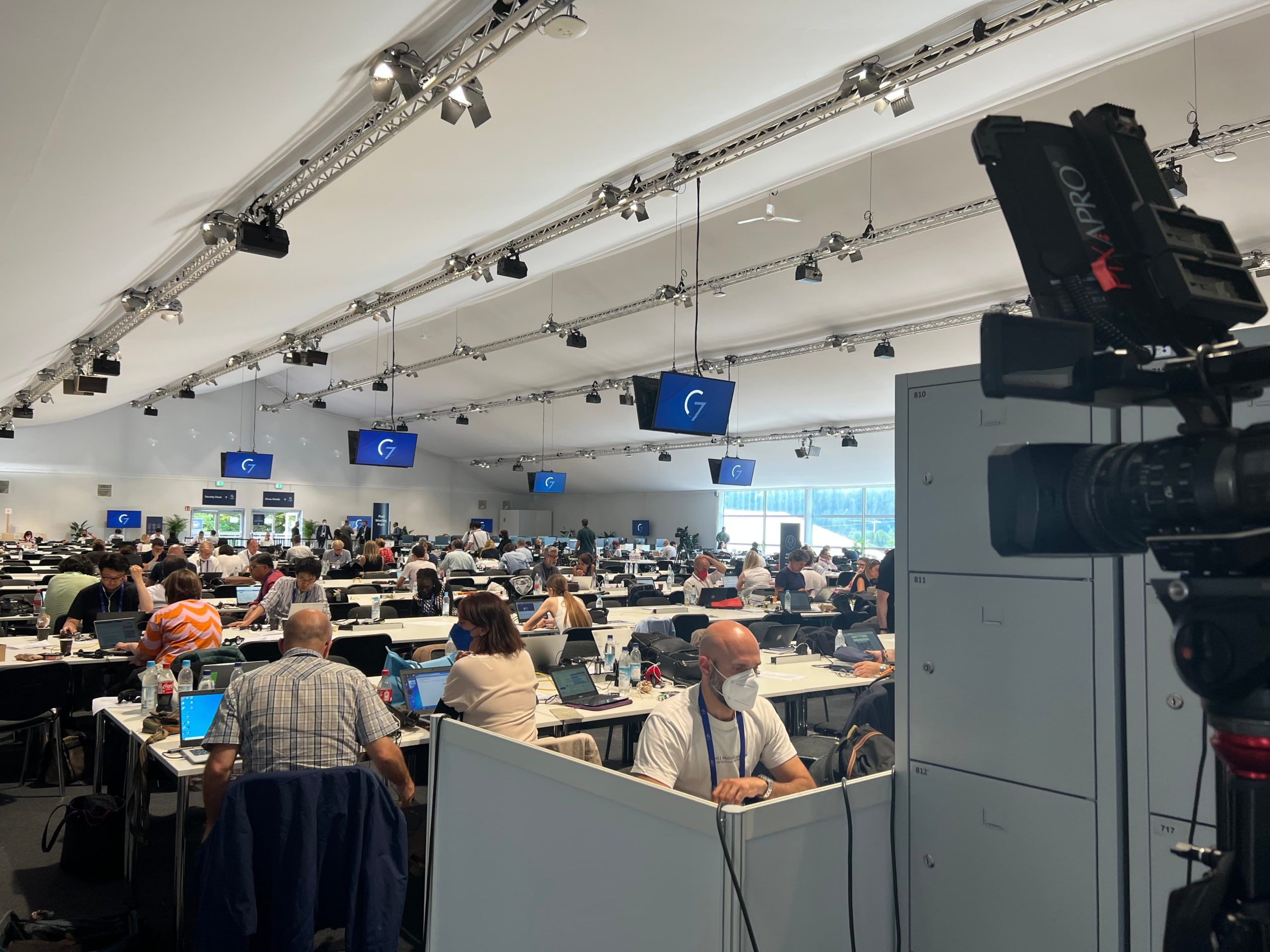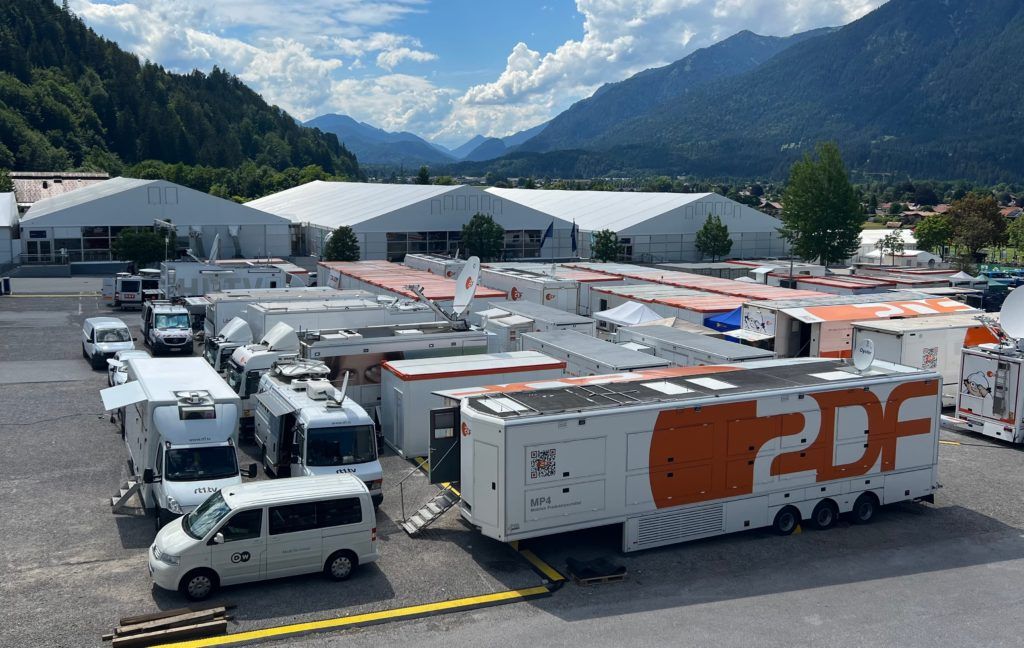
G7 Summit: Running radiocommunications behind the scenes
By ITU News
We caught up with Felix Schad, Measurement Engineer at BNetzA, short for Bundesnetzagentur: the Federal Network Agency for Electricity, Gas, Telecommunication, Posts and Railway of Germany, to learn more about radiocommunication and frequency coordination operations during the 48th G7 Summit recently held in Germany.
What was the role of BNetzA at the G7 Summit?
Security services, press, broadcasters, NGOs and individuals – who doesn’t rely on radiocommunication services during a major global event?
During the G7 Summit, a vast number of these radio frequency users and radio applications intersected within a small region at the southwest German border. The users originated from all around the globe, each bringing a huge amount of radio equipment with them.
Our agency’s task at the G7 Summit was to enable the reliable meeting of these users’ radiocommunication needs. Our work is based on the German frequency assignment table, which in turn is based on the International Telecommunication Union (ITU) Radio Regulations list of frequency assignments.
This enables us to coordinate the required frequencies on a cross-border scale.

What kind of steps did BNetzA take to coordinate frequencies during the Summit?
The demands of modern communication systems require the ability to monitor a vast range of frequencies. To do this during the Summit, radio direction finder systems were placed in strategic locations. Six measurement vehicles, each with a large suite of equipment were moved to the area – along with a number of monitoring experts to cover each day of the Summit, 24/7. Apart from that, quick-response teams were on standby in the nearby metropolis of Munich.
The BNetzA also opened channels for all potential frequency users to request frequencies for the G7 Summit, regardless of the radio link’s nature (e.g. terrestrial or earth-to-space). The requests came from a range of users, from media agencies to Summit delegates.
Our main task was to collate all those requests in a sensible way and align them with national and international frequency allocation plans to enable the interference-free operation of as many requests as possible.
What were some of the constraints or challenges in the G7 frequency coordination process?
Frequency coordination must respect the demands of the safety and security forces, while also respecting existing frequency uses within the region of the Summit. Furthermore, the protection of neighbouring country Austria had to be considered. This is why months before the event, we conducted a frequency occupancy survey at the Elmau castle and in the city of Garmisch-Partenkirchen in Bavaria, where the G7 venue (International Media Center) is located.

What other radio-related preparations were needed ahead of the Summit itself?
The monitoring service organized support for the G7 Summit in tight cooperation with the frequency assignment division and police forces. The whole operation on the Summit’s site began with the establishment of the International Media Centre, after months of preparatory tasks.
On top of coordinating frequencies before the Summit, an in-situ office was established at the International Media Centre. This enabled us to not only solve imminent problems on-site, but also respond quickly to short-term frequency requirements during the event, thanks to tight collaboration between civil and military frequency administrations.
Apart from the frequency assignment team, the radio spectrum monitoring team from BNetzA is active in the region where the G7 Summit took place. Overall, BNetzA’s radio spectrum monitoring division consists of more than 300 experts distributed across 22 offices in Germany. The wide range of tasks is handled by the use of fixed, mobile and portable monitoring equipment. For that, approximately 90 vehicles are on duty to reach any location throughout Germany.
Beyond the G7 event, how has ITU influenced the broader work of BNetzA?
The fixed radio monitoring stations are part of ITU’s international monitoring system and as such are equipped with a large range of antennas and radio direction-finding systems.
Furthermore, measurements are done for ITU’s Regular Monitoring Program in frequency bands between 2 850 kHz and 28 000 kHz. Additionally, Germany operates a space monitoring station capable of doing measurements on geostationary (GSO) and non-GSO satellites – even for ITU members!
The range of monitoring tasks includes inspecting radio stations, checking coverage obligations for 4G and 5G networks, measuring against limits for non-ionized radiation and, of course, hunting for radio interference. The latter is a service accessible by every citizen and organization.
Finally, knowledge regarding organizational and technical issues not only stem from our own experience, but also from the Recommendations and Reports of the ITU Radiocommunication Sector (ITU-R) like ITU-R Report SM.2257, for example, which addresses spectrum management and monitoring for major events.
These documents are based on the work of ITU-R’s Working Party 1C, where the German administration has been active for many years. In addition to ITU publications, ITU also facilitates the general exchange of knowledge between experts in the field of radio monitoring.
Image credit: Monika Gehner
